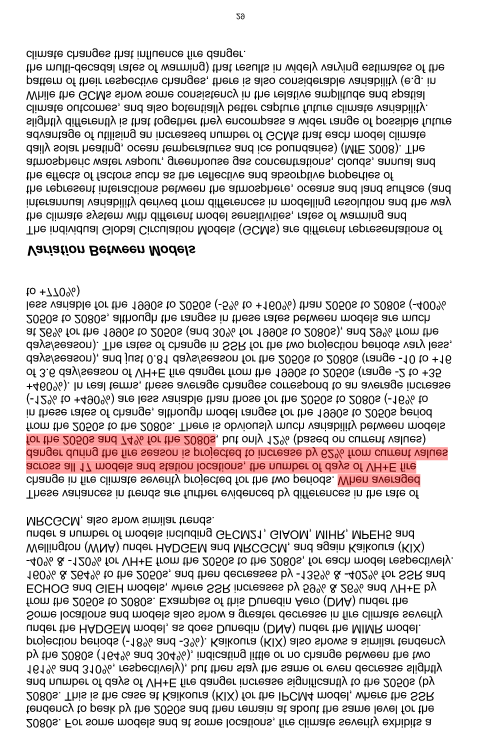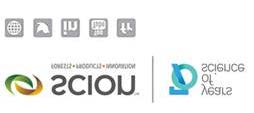From:
s 9(2)(a)
Sent: Wednesday, 9 December 2020 4:34 pm
To:
s 9(2)(a)
Cc: Drew Bingham <[email address]>
Subject: RE: Question from MfE on their OAC2020 Report
MFE CYBER SECURITY WARNING
This email originated from outside our organisation. Please take extra care when clicking on any links or opening any
attachments.
Hi s 9(2)(a) & Drew
THE ACT
Regards correct citation, the Pearce et al. (2011) report does include a statement (on pg 29 – see below) that the average increase in fire danger (days of VH+E)
across all models and station locations is around 70% (62% to the 2050s, and 74% to the 2080s). However, with hindsight, this result wasn’t highlighted as
prominently as it should have been in other parts of the report, such as the Exec. Summary and Conclusion (where there was a clear lack of quantitative results!).
However, perhaps a better and more up-to-date reference is actually the Watt et al. (2019) paper in Forestry – see attached. This is the source for the Scion
Connections article cited in the OAC report. In the fire risk section, Watt et al. contains the statement: “When averaged over all sites, the number of days with VH +
E fire risk was projected to increase by 71 per cent by 2040, and by a further 12 per cent by 2090” – see below. It also says in the abstract that: “The average season
length with ‘very high and extreme’ climatic fire risk increases by 71 per cent up to 2040 and by 83 per cent up to 2090”, which isn’t necessarily the tidiest way as
saying the same thing (for no. days of VH+E, not fire season length which is a different measure that wasn’t looked at in this paper).
The key difference between the two analyses was that Watt et al. used results for only 12 of the 17 GCMs used by Pearce et al., to be comparable with the other CC
impacts they looked at.
Scion (and FENZ) are happy to stick with the current text on pg 64 of the OAC report around the above, with the citation corrected. The issue was more about the
how discussion around this projected future increase can be related to the discussion of observed current trends on pgs 44-45, especially given the section title of
UNDER
“The risk of wildfires is changing”. This might be achieved by including an introductory sentence or two clarifying this distinction in the objectives of the studies, e.g.
around whether the observed trends over recent years are showing any evidence of the increases projected. This would also lead nicely into the section that follows
around natural climate variations, which provides one possible explanation of why the more widespread increases projected with climate change aren’t being seen
yet.
Hopefully this helps clarify what we were suggesting by way of changes to the report.
Regards, s 9(2)(a)
INFORMATION
1982
RELEASED
OFFICIAL


THE ACT
UNDER
INFORMATION
1982
RELEASED
OFFICIAL
s 9(2)(a)
Scion
s 9(2)(a)
Web http://www.ruralfireresearch.co.nz


 From:
From:
s 9(2)(a)
Sent: Wednesday, December 9, 2020 2:26 PM
To:s 9(2)(a)
Cc: Drew Bingham <[email address]>
Subject: Question from MfE on their OAC2020 Report
Hi s 9(2)(a)
I trust this finds you well.
I have been in touch with Drew Bingham at MfE regarding our recommendations. One of the recommendations I sent was a “correction is required in the OAC2020
(Our Atmosphere and Climate 2020) report; such that the MAF report from 2011 and the results it presents (attached) are used as the citation on pg 64 of
OAC2020. According to s 9(2)(a) , these are the most recent and relevant research results available on this topic.”
ACT
In response, Drew asks:
THE
“I just wanted to clarify with you on the third point – is the recommendation that only the citation on p64 needs to be changed and everything else is fine, or that
the entire paragraph needs to be changed to reflect the new citation? I can’t really tell if he’s saying that the MAF report is the basis of the statements on the web
page that we originally cited, or that the statements on the Scion webpage that we cited are incorrect and that we should be citing the report instead, and updating
the paragraph as well with different findings.
I had a look through the report and did not see any sections that appear to readily support the material on the Scion web page (and subsequently in our report), but
there is a lot of technical information, so if the author tells me to use that report to support the statements on the webpage and report, I’m happy to do so.
s 9(2)(a) - Can you please let us know your response to the query above? I’ve Cc’d Drew Bingham here so he can receive your thoughts directly – rather than me risk
miscommunicating them by being the messenger.
Many thanks, s 9(2)(a)
s 9(2)(a)
UNDER
s 9(2)(a)
National Institute of Water & Atmospheric Research Ltd (NIWA)
301 Evans Bay Parade Hataitai Wellington New Zealand
Connect with NIWA: niwa.co.nz Facebook LinkedIn Twitter Instagram
To ensure compliance with legal requirements and to maintain cyber security standards, NIWA's IT systems are subject to ongoing monitoring, activity logging and auditing. This monitoring and auditing service may be
provided by third parties. Such third parties can access information transmitted to, processed by and stored on NIWA's IT systems
This email and any attachments are intended solely for the addressees named above. It may contain information which is legally privileged, confidential or subject
to copyright. Any unauthorised review, use, disclosure or distribution is prohibited. If you receive this email in error, please delete it. As part of Scion’s cyber security
policy, Scion’s IT systems are subject to ongoing monitoring, activity logging and auditing, and may include 3rd party monitoring on our behalf.
INFORMATION
1982
RELEASED
OFFICIAL




